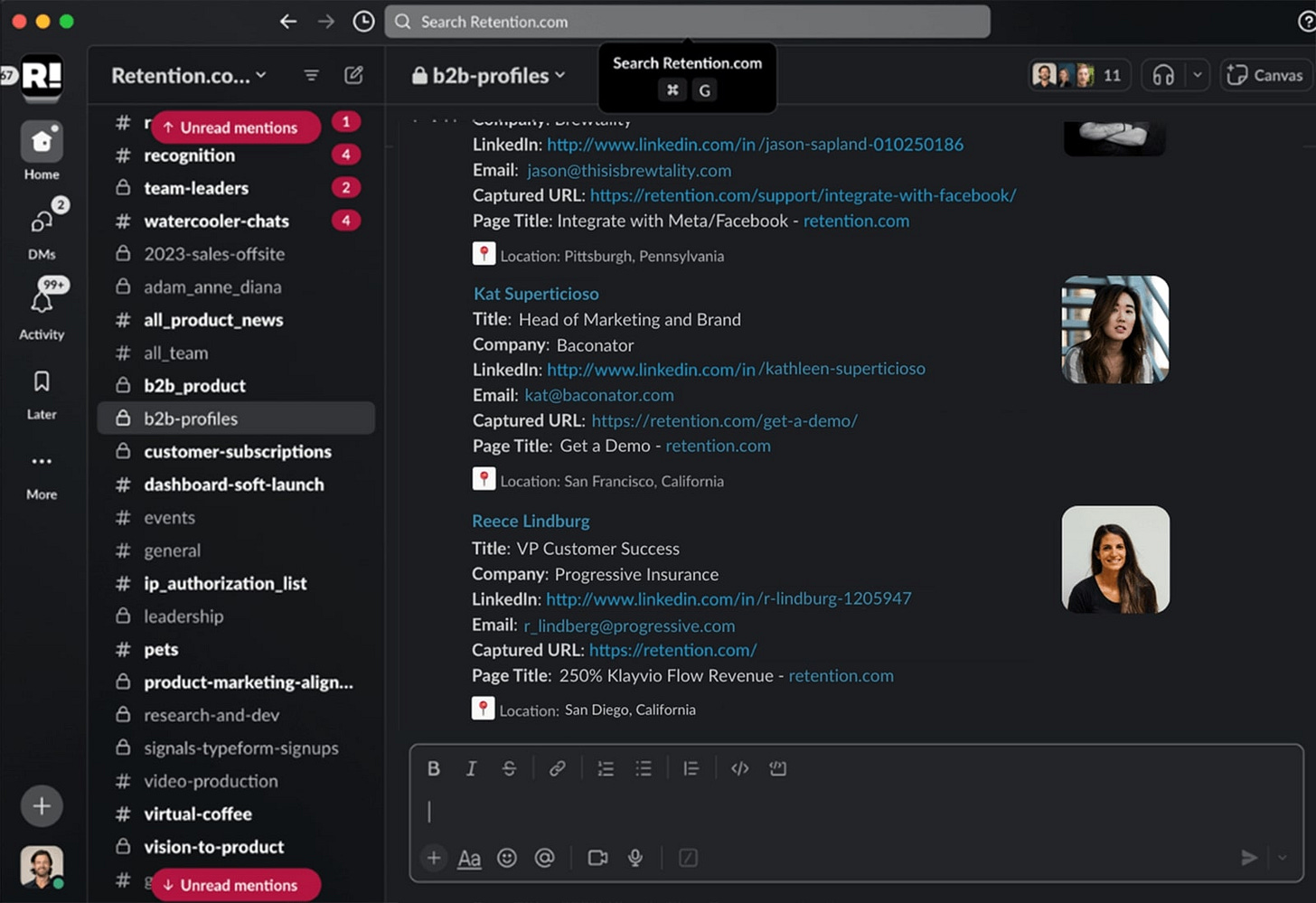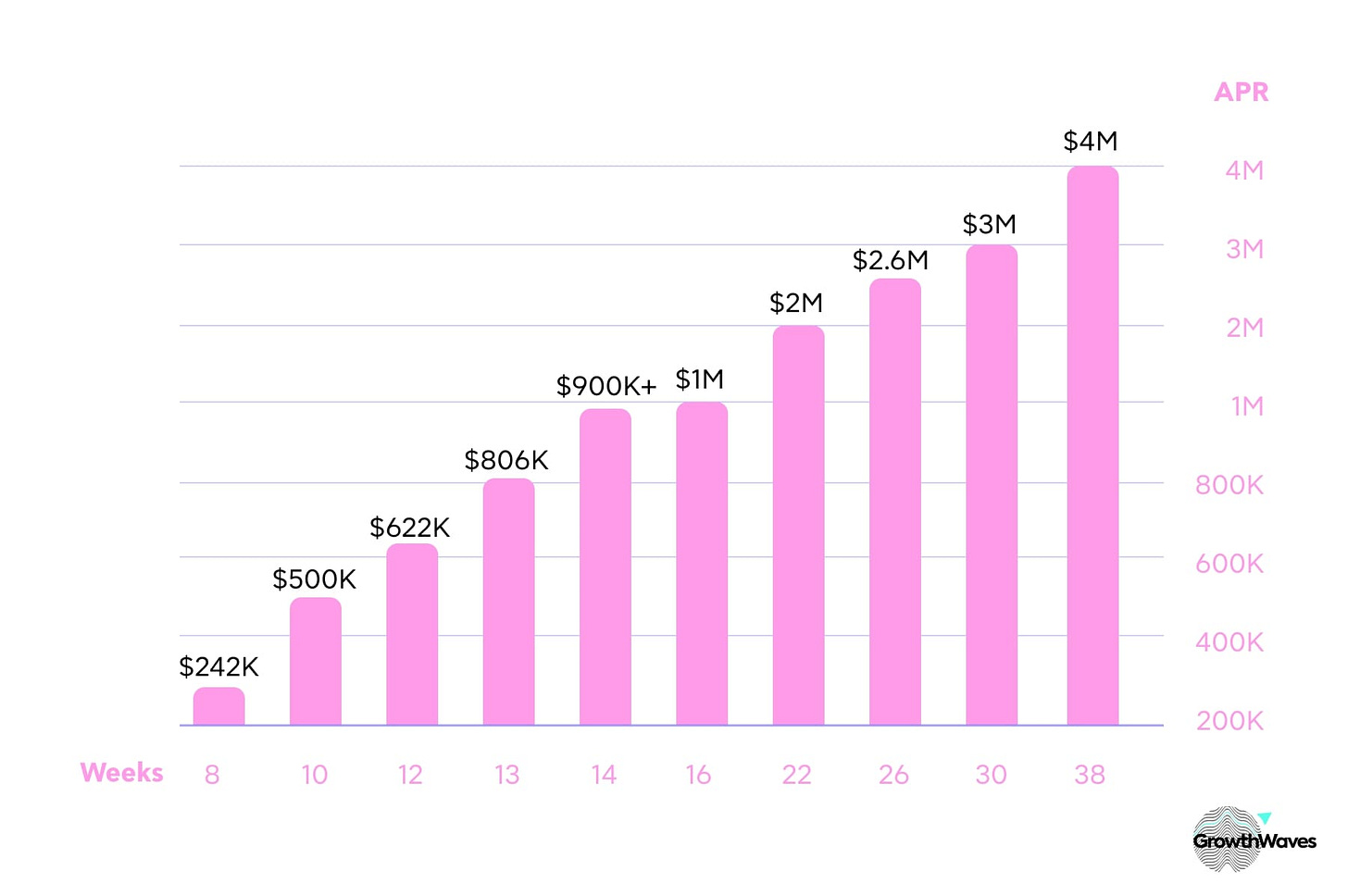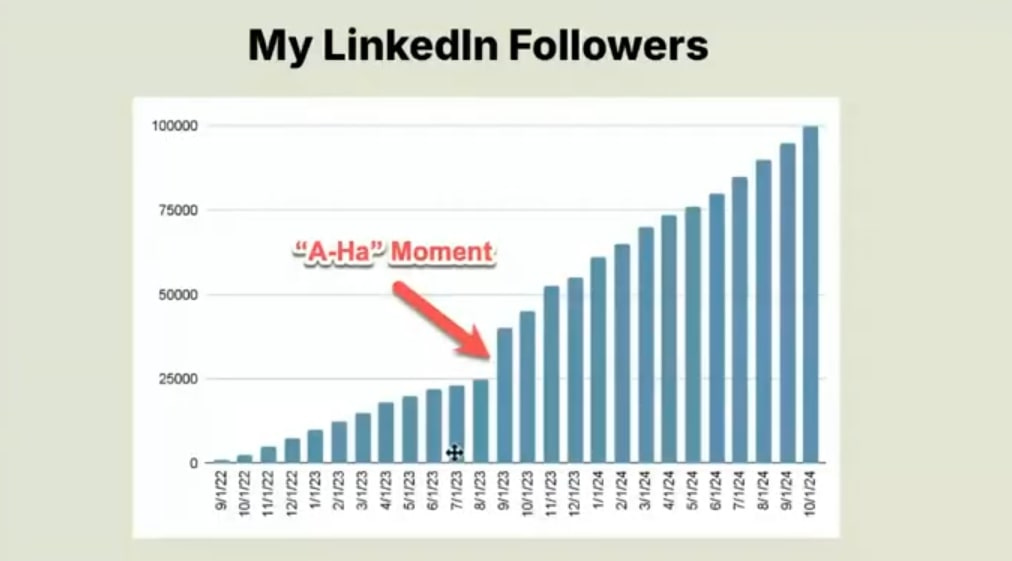How they reached $1M ARR in just 16 weeks
How a founder-led approach fueled RB2B’s success
👋 Hey, I’m George Chasiotis. Welcome to GrowthWaves, your weekly dose of B2B growth insights—featuring powerful case studies, emerging trends, and unconventional strategies you won’t find anywhere else.
Today’s Note is about a company that went from 0 to $1M ARR in just 16 weeks.
Yes, you read that right.
RB2B is the third and latest company that founder Adam Robinson grew to $1M ARR. Previously, with Retention.com, it took him 27 weeks to achieve this milestone.
Now he’s managed it in 16.
Let’s dig into RB2B’s growth model, which Adam calls “founder-brand driven inbound-led outbound.”
Key findings (TL;DR)
RB2B is a tool that identifies website visitors down to the specific person (it doesn’t stop at company level) and then feeds their information through Slack.
RB2B reached $1M ARR in just 16 weeks with a team of no more than 5 employees.
RB2B’s founder, Adam Robinson, leveraged his strong LinkedIn presence to drive RB2B’s growth.
The growth model integrates inbound leads from the website and Adam’s posts with targeted outbound efforts, which drastically increases response and conversion rates.
RB2B’s growth trajectory
RB2B is a tool that identifies the exact person (from the US) who visits your company website and then feeds you that information through Slack.
It offers a free plan alongside paid options for larger companies and those looking for integrations other than Slack.
Here is the information you get about your previously anonymous website visitors:
Full name
Company they work at
Job role
Email address
LinkedIn profile picture (if they have one)
LinkedIn profile link
Location
Website page they visited
Date and time of the visit

It’s easy to see how this person-level identification can be invaluable for a B2B business, especially for SaaS revenue leaders who are always looking for new leads.
Adam launched RB2B on March 1st, 2024.
Here’s a graphic of the company’s ARR growth in the eight months since then:
Adam made his growth metrics public for everyone to follow in real time.
You can access them here.
Even more amazing is that all of this was achieved with a super-lean team – since its launch, RB2B has yet to surpass six employees in total!
What are their goals?
In the words of Santosh Sharan, RB2B’s COO:
“Within 4 years, we will bootstrap RB2B into a $1B company with less than 10 full-time employees.”
Let’s take a closer look at the motion they predict will take them there.
Founder-brand driven inbound-led outbound
While a bit of a mouthful, Adam’s GTM motion has proven very effective for RB2B so far (as evidenced by the growth chart above).
There are three key elements to this that we will explore:
Founder brand
Inbound-led
Outbound
Founder brand
Put simply, Adam Robinson is a big name on LinkedIn.
In fact, just a month ago, he hit 100K followers on the platform.
It took him about two years to build such a big following for his founder persona, through consistent posting not only in terms of frequency but also in terms of his values and tone of voice.
That is not to say he hadn’t pivoted in those two years.
In my interview with Adam, he shared how halfway through, at the end of year one of consistent LinkedIn posting, he shifted his focus away from eCommerce brands and towards SaaS revenue leaders.
This change in target audience proved to be even more beneficial as his following started growing at breakneck speed.
Here is what this “A-Ha” moment looked like in a slide he shared with me.
So what makes Adam’s founder brand stand out on LinkedIn?
What kind of content brought him to 100K followers?
According to him, it comes down to two things:
His willingness to talk about revenue (profit and loss) in specific numbers. (Example post.)
His willingness to talk about the negative things that are going on in his businesses. (Example post.)
“No one will show financials. So, if you do that, it will stand out. People just can’t help but be like ‘Oh my God, a PNL, let me look at it.’ (...) I (also) don’t think anyone else is willing to share negative information about their business on LinkedIn, besides me.”
At the same time, simply replicating his playbook may not work for everyone.
In fact, it most likely won’t.
Each founder has a different perspective and a different set of experiences they bring to the table.
Adam’s view is that each founder should strive to find their own online ‘persona’ which aligns with their audience but also represents their core values.
“This is analogous to finding product-market fit for a startup. (...) This character gets co-created by things that have resonance with your audience and what you want to be in their minds.”
It will take time to find this persona.
It will also take time to build a following for it.
But it is definitely a worthy endeavor.
“My LinkedIn Founder Brand is the most impactful business move I've ever made. It’s the reason everybody in the ecosystem knows RB2B, Santosh, and I.”
A founder brand helps you:
Build more trust than any other marketing strategy.
Immediately know when you have created something great.
Immediately know when you have created something subpar.
Pivot in the right direction if needed.
The fact is that, nowadays, the presence or absence of a founder brand could mean success or failure for a business.
Inbound-led
Okay, so you have a founder brand.
Then what?
How does this benefit RB2B?
The idea is that Adam’s founder profile is the first point of contact. Perhaps even the first several points of contact.
A potential customer reads his post, likes his thoughts/transparency/persona, and gets curious about his product.
They visit the product website. This is the inbound moment of the motion.
Thanks to RB2B, Adam and his team know exactly who the person who visited their website is (if they are based in the US).
RB2B feeds this information into Clay, which filters for RB2B’s ICP.
If the potential customer fits their ICP, the inbound part of the strategy transitions into outbound.
Outbound
As Adam puts it, “Who will prospects respond to when there is so much inbox noise?”
“If I were to send an email or LinkedIn message to a regular engager in my audience, they will probably respond. If someone on my team were to email that person, the response rate would be much lower.”
The bottom line is that prospects will more likely respond to those they know and trust, even if it is only through their LinkedIn feed.
The final step in Adam’s GTM motion for RB2B is messaging (emailing) their potentially ideal customers from Adam himself.
They use Smartlead AI for this, and their conversion rates are 11%.
The beauty of this approach, according to Adam, is that “the influencer [founder] can book the meeting, but they don’t have to take the call.”
The founder brand works as the hook, while the product and the sales team do the rest.
Of course, the outbound part of the strategy can (and should) be tailored to your preferred workflow. It can mean messaging the prospect on LinkedIn, sending them an email, or perhaps even making a warm call.
How to apply this growth motion
First and foremost, start building your founder brand (if you haven’t already).
Consider the following:
Who your target audience is
How you want them to perceive you
What values you want to represent
What you want to achieve for your business(es) in the future
Be prepared to work hard and dedicate a significant amount of time to the effort. At least in the beginning.

Here’s how Adam approaches it:
“I view my whole work life, as though I’m looking through a camera over my shoulder. It is a constant ‘filter for content’ lens that I look at everything through. (...) I think if you didn’t have that attitude, it’d be really hard to compete with.”
As your audience starts growing, so will interest in your product.
The final step would be to reach out to selected prospective customers (those who show intent by engaging with your content and visiting your website) and apply your communication and sales skills to move them along the customer journey to the sign-up moment.
It sounds simple, but it is not easy. It could take you months, even years, to reach the point where your ICP recognizes who you are, trusts you, and responds well to your outbound efforts.
But you will never know how transformative it could be until you start working on it.
Thank you for reading today’s Note.
See you next week!



